Bringing the In-person Experience Online With Technology
Tools that allow customers to interact with your product can mimic the in-person experience — and the more shoppers can visualize your product, the more likely it is that they’ll buy it.
 Product Page Guide
Product Page Guide
Tools that allow customers to interact with your product can mimic the in-person experience — and the more shoppers can visualize your product, the more likely it is that they’ll buy it.
Get 19 lessons from top experts delivered straight to your inbox
Your information will be treated in accordance with our Privacy Policy
With more and more people shopping online, it’s more important than ever for brands to provide a frictionless end-to-end experience. For products that consumers will generally hold, try on, inspect, or try out before using, this shift from brick-and-mortar shopping to eCommerce can present a challenge for brands who sell those items.
Brands need to find a way to bridge the gap between online and offline by getting creative with their customer experiences. And there are a variety of tools and partners that can help them accomplish it.
In this chapter, we’ll discuss some emerging trends in photography, augmented reality (AR), and apparel sizing.
The terms “360-degree photos” and “3D photos” are often used interchangeably, but they’re actually quite different. They both fall under the umbrella of “spin photography,” however, and both of them can help consumers to better visualize your products by allowing them to interact with them.
If you have a product that customers will want to see from various angles, you might want to consider implementing one of these solutions. 360-degree photos are intended for items that consumers generally want to see from the front and back, like backpacks or food items. 3D photos are well suited to items like electronics and shoes, where consumers will want to zero in on details or see it from the top and bottom.
UK-based furniture brand Heal’s has 360 degree photos on some of its higher ticket items, like couches. It presents a unique view of furniture that consumers don’t often get, and helps viewers to better visualize it in their homes. And to get a sense of 3D photos in action, you can see this one, from photography solution brand Ortery.
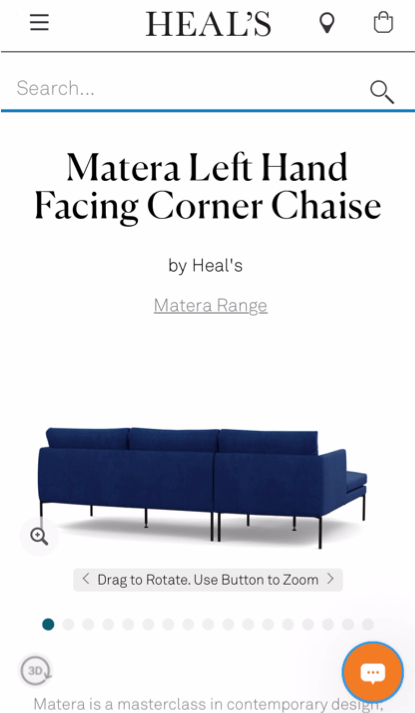
Interactive product photos increase engagement and help consumers get a better sense of what your products look like in the real world. And that visualization translates into higher conversions.
Augmented reality (AR) is exploding right now. In fact, according to Reuters, the global AR market is forecast to reach a value of $70.01 billion by 2023.
AR provides brands with a unique opportunity to offer immersive digital experiences and engage with customers in more meaningful ways.
Augmented reality has two common uses when it comes to products:
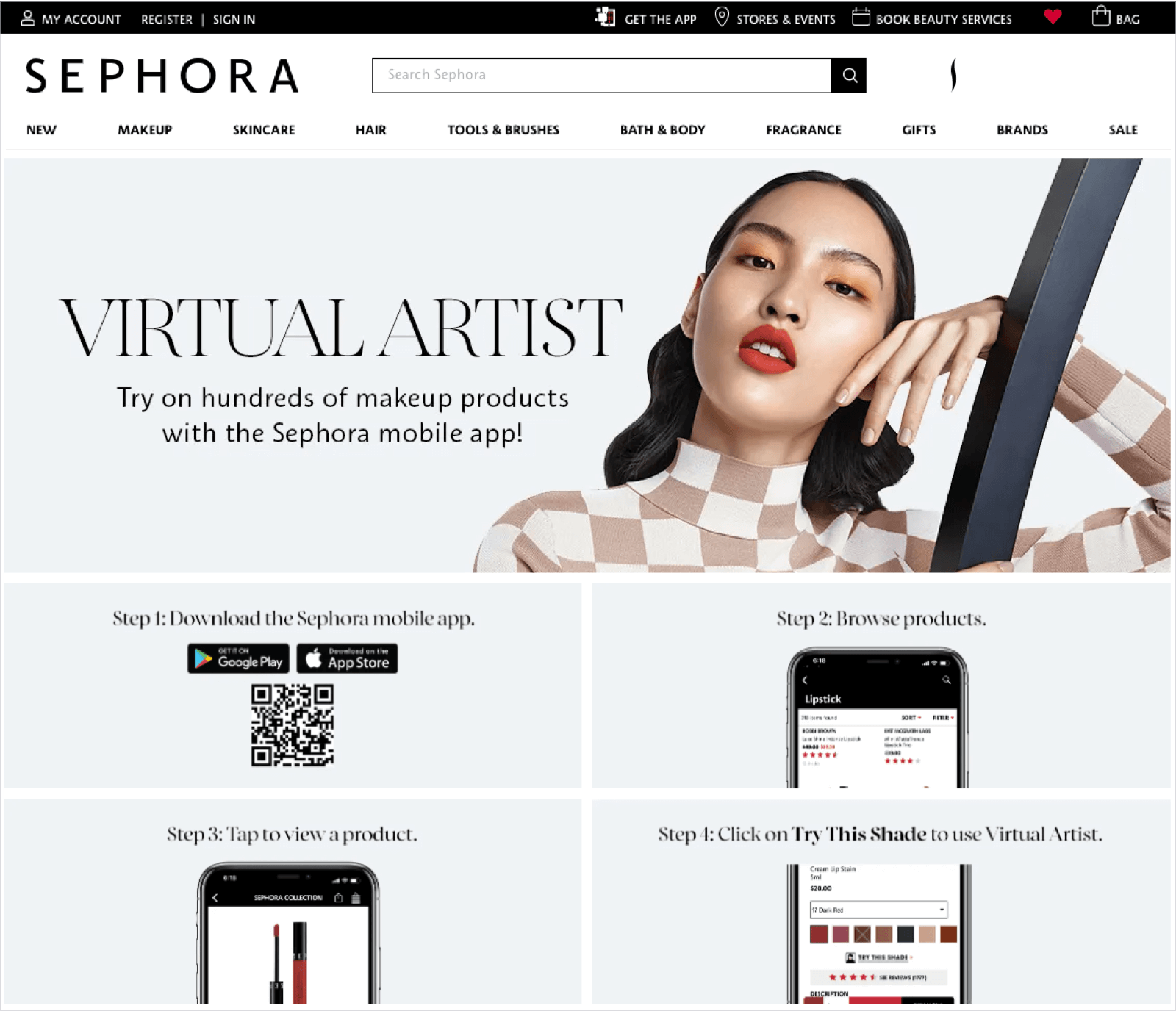
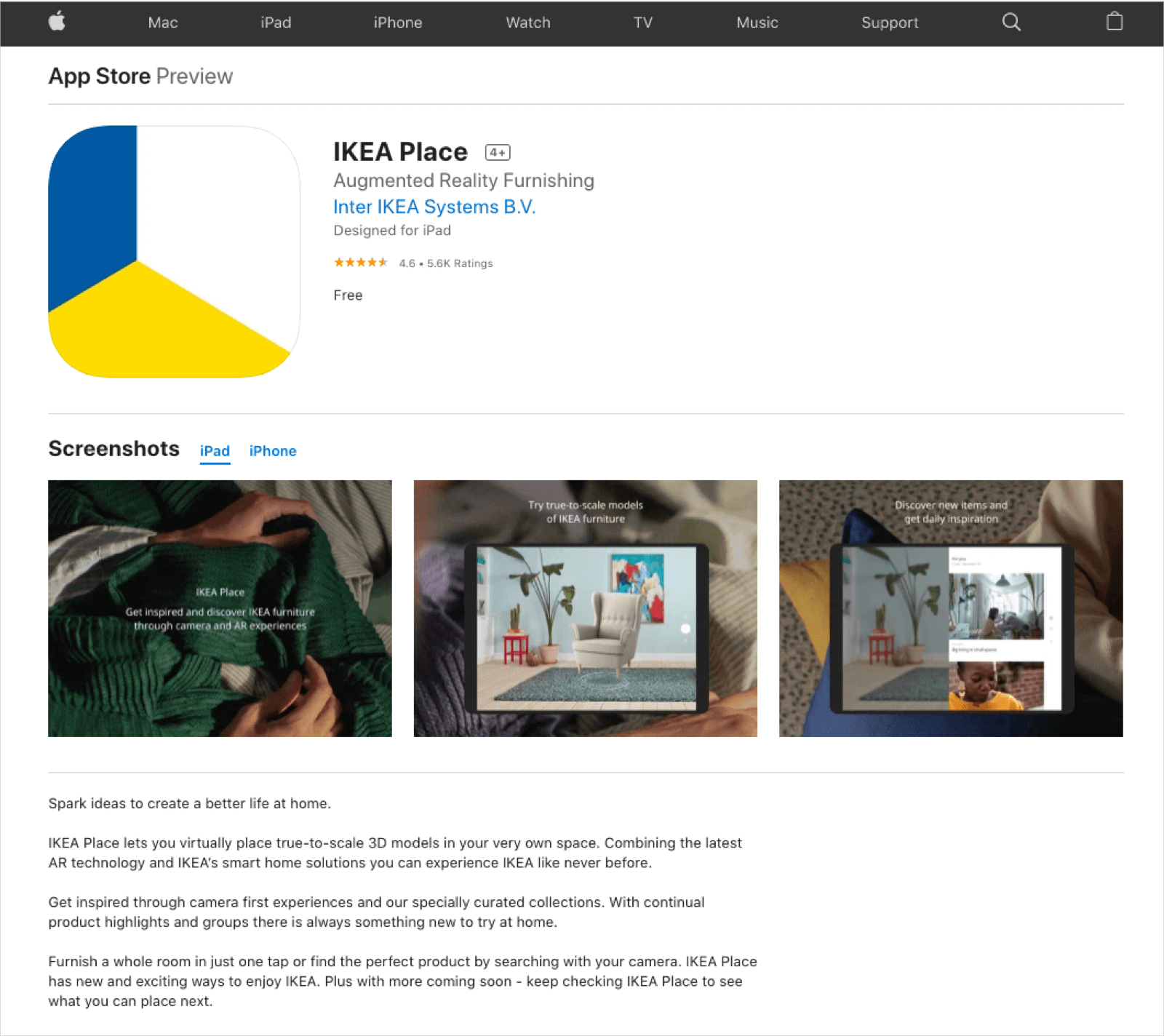
Giving consumers the option to virtually try before they buy leads to increased engagement and sales. In fact, a study from threekit shows that 71% of consumers would shop at a store more often if they offer AR, and 40% would be willing to pay more to brands that offer AR.
Product sizing is often an overlooked part of an online clothing business. But one of the biggest challenges with shopping online is in fact picking the right size. Unlike shopping in a physical store, you can’t try on different sizes to see what fits the best. To make the issue more complicated, sizes are not standardized across brands or even within the same brand. This is why 20% to 40% of returns are due to fitting problems.

This is why special attention needs to be put on product sizing. At the very minimum, shops need to provide accurate size chart information on every product page with a clear how-to-measure guide. But brands can go beyond a size chart and offer interactive, easy to use tools that will help consumers to buy the right size, reducing the headache of returns for both customer and brand.
Size charts are not intuitive to read and most shoppers often skip them if they don’t know their body measurements. And they may leave customers with more questions about how to measure and what each number means for sizing. Most brands don’t invest in customer education when it comes to sizing, not realizing the negative impact that a lack of consumer knowledge can have on costs.
Instead of expecting customers to measure and accurately predict which size will fit them, you can implement an interactive tool to recommend sizes, like what we offer at Kiwi Sizing. The customer inputs simple information like age, weight, height, and bra size, and the interactive tool recommends which size they should order.
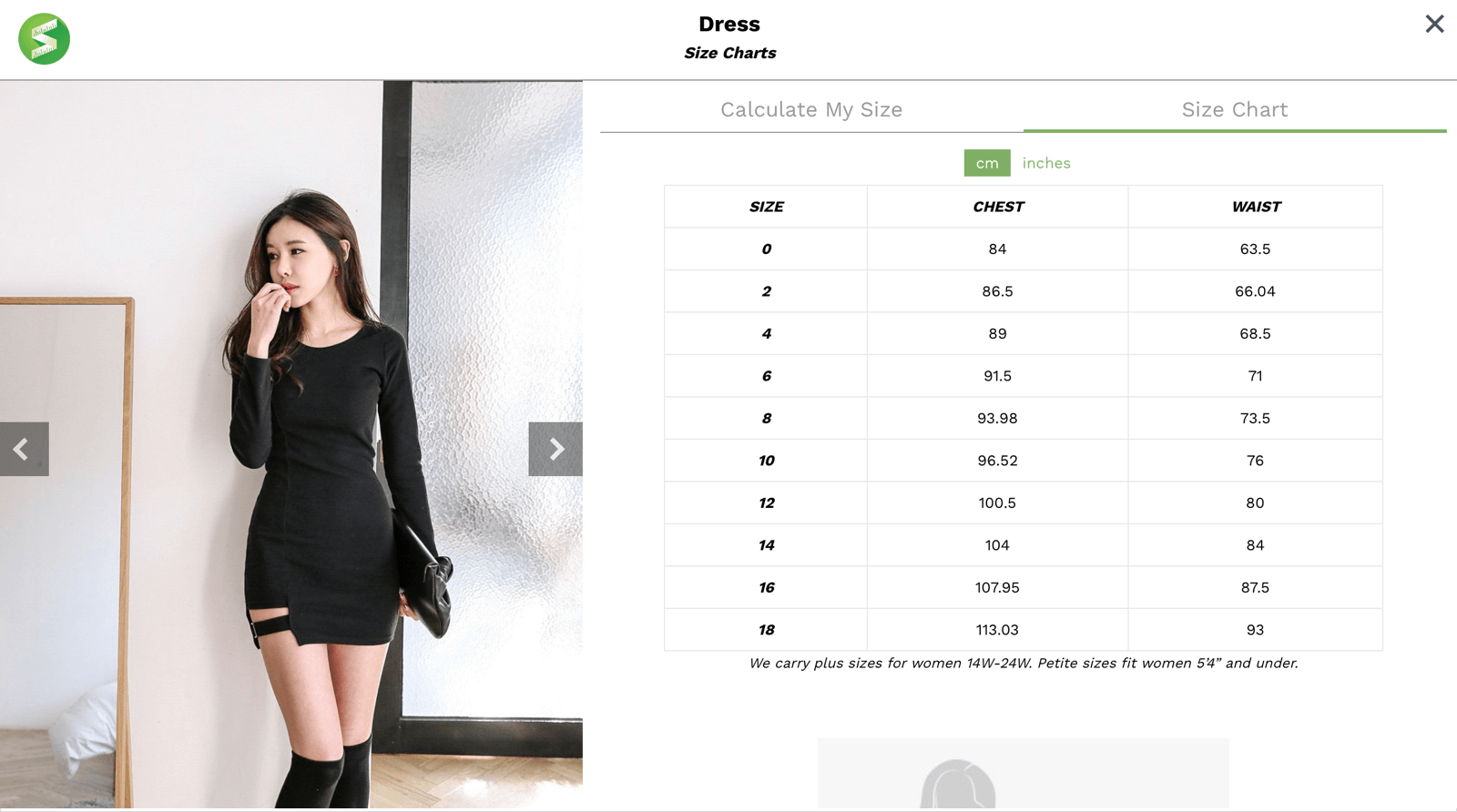
And this type of tool isn’t just for clothing; other types of businesses can also implement it, like pet brands.
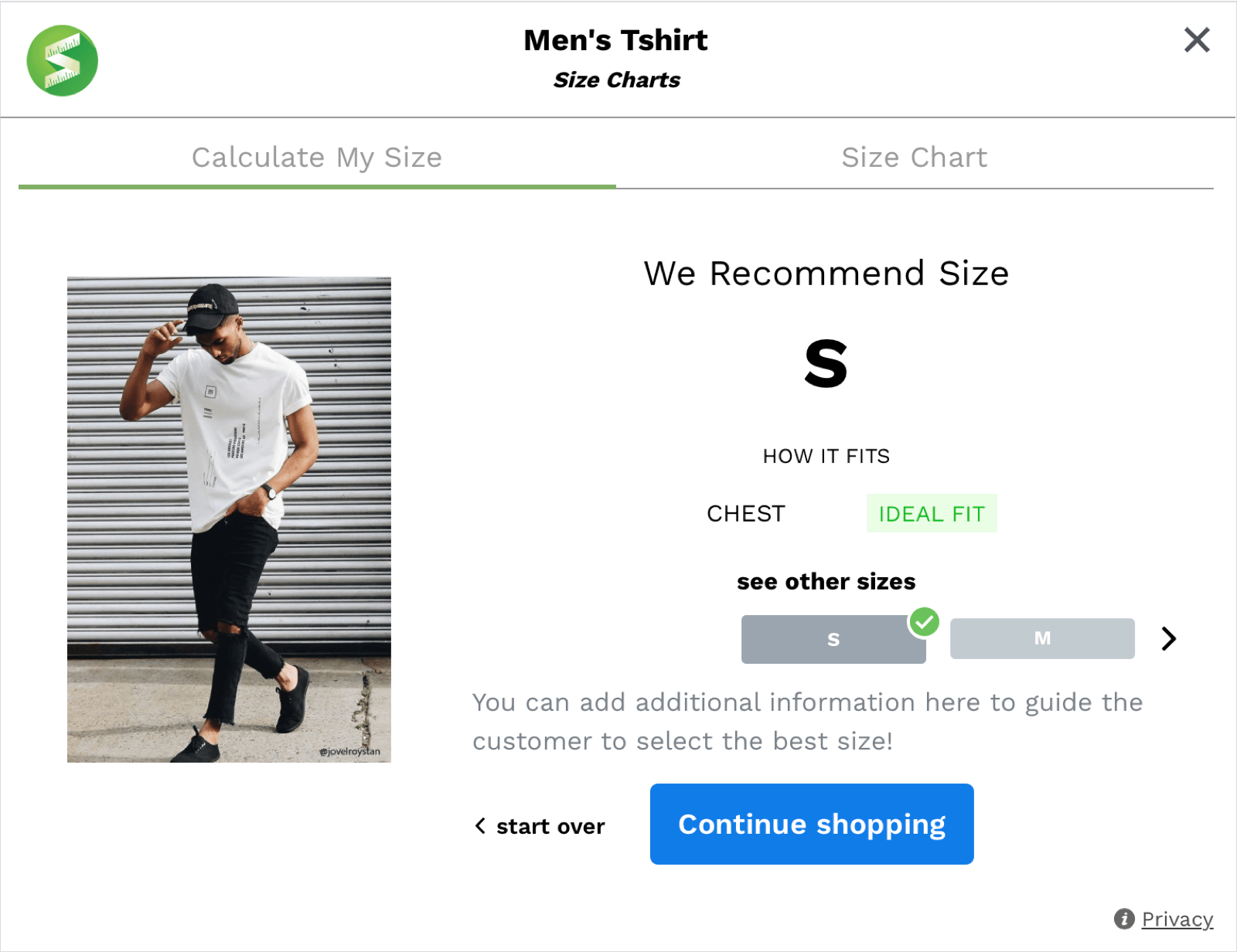
The easier you can make the customer journey, the more sales you’ll make. That means bringing as many of the benefits of brick-and-mortar shopping online as you can. Customers want to be able to interact with a product before making a purchase, and the more they can visualize your product in their life, the more likely they’ll be to buy it.

